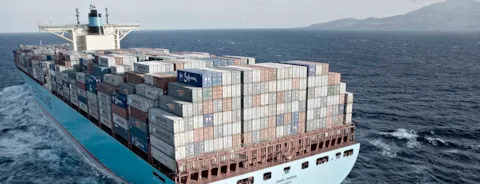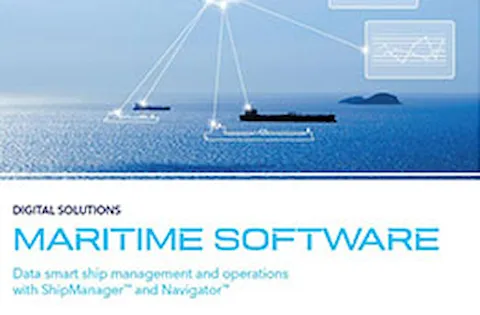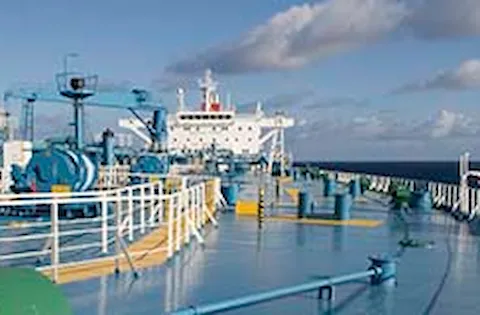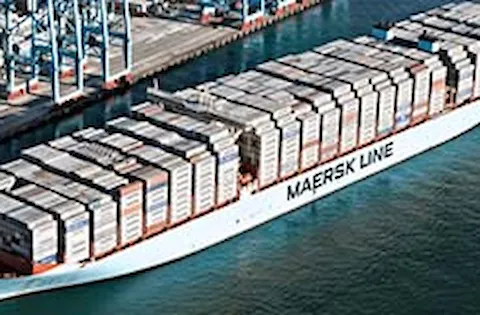Maersk Line towards greater transparency and efficiency in ship management
Maersk Line has placed the largest ever order for DNV's ShipManager software and is implementing it at a very ambitious rate.
Maersk Line
Maersk Line, the world’s largest container shipping company, has chosen to implement DNV’s maritime marine fleet management and ship management system ShipManager on its owned fleet of 275 vessels. By April 2017, nine legacy applications will be replaced by one and 8000 Maersk employees will be using ShipManager around the world. At a DNV seminar held in Hamburg recently, Sebastiaan Van den Wijngaert, Senior Project Manager at Maersk Line IT, spoke to Forum Magazine about why Maersk Line chose DNV’s software and what challenges the company has faced during the implementation phase.
Choosing ShipManager
Recent and upcoming regulations were a key motivation for choosing a new Ship Management system, Van den Wijngaert explains. “We chose an off-the-shelf solution because we wanted to move away from too much customization and ensure that our application lives up to the industry standard and benefits from regular updates.” Maersk Line will be using five integrated ShipManager modules: Technical, Procurement, Project (dry docking), QHSE, and Analyzer.
An additional factor was that ShipManager packaged all necessary processes into one system. “Our seafarers really appreciate this, as it simplifies their work and it makes on-boarding people easier,” he says. Previously Maersk Line used nine applications to manage core ship management processes. “Our old, legacy applications were not fully integrated, required a high degree of manual data transfer between applications, and there were divergences between what ship crews and on-shore staff would see on their screens. That needed to change,” he adds.
The Analyzer Module will improve reporting on factors such as compliance, safety, maintenance, and spend per vessel. “The module uses data collected by the ship owner, such as information about technical maintenance, procurement, and QHSE (quality, health, safety, and environment) and enables the customer to benchmark a vessel against others in their fleet, in order to make more informed business decisions,” explains Rune Lyngaas, Head of Product Management Maritime Software at DNV - Digital Solutions. “The Analyzer holds great potential for our business, as it will give our fleet managers a level of transparency they never had before,” Van den Wijngaert adds.
A solid roll-out process
The roll-out for the project is ambitious. After starting with an implementation quota of ten vessels per month, Maersk Line decided to speed up the process even further as the designed roll-out process proved to be working very well. 42 ships have been completed so far, 15 of those in October alone. With a target of equipping 65 vessels by the end of the year, the members of the Maersk Line roll-out team really have their work cut out for them. The Maersk Line project team includes 30 specially trained seafarers who travel from ship to ship, staying for 3 weeks to install the software correctly, check for synchronization issues and train the vessel crew in using ShipManager. To ensure it all runs smoothly, Maersk Line is also carrying out quality assurance checks throughout the implementation phase.
We are very happy with our current progress. We are constantly optimizing our data extraction, adaption and migration, and updating our installation package as we go along,” Van den Wijngaert says. The greatest challenge he is facing in the project is managing the data migration.
The data volumes are immense. The entire Maersk Line fleet represents more than 1.8 million components of technical management data that needs to be extracted from the Maersk Line system and imported into ShipManager. “We carry out a complex analysis for every single vessel, as no two ships in the Maersk Line owned fleet are exactly the same. Even sister ships only have about 90 per cent of elements in common, due to replaced equipment of a different type or changes to the vessel design,” Van den Wijngaert explains. Every nut and bolt, piece of equipment, and each repair or paint job needs to be considered to get a full picture of a vessel – that amounts to about 100,000 elements per ship. “Previously, this data was stored in an older application, where the data structure was not kept fixed over time, resulting in a complex and inconsistent structure. Thankfully, we have found a way of unravelling it,” he adds.
“The so-called ‘Master Vessel’ concept is a way for us to make sure that we can introduce each of the vessel’s elements into the fleet equipment register,” Van den Wijngaert explains. The Master Vessel is a virtual twin of all ships within a vessel class that feeds all elements and equipment into the data migration tool. This tool contains essential information for the construction of the final ShipManager vessel kit installed on board. Maersk Line is close to automating Master Vessel creation – this will enable them to considerably speed up the process for creating vessel kits (ship-specific installation DVD or USB-stick, containing the ShipManager application and database).
Cooperation on improvements
“DNV has been very cooperative and proactive in developing a number of enhancements to close functional gaps that still exist in areas such as procurement and technical management,” Van den Wijngaert states. “We have learned a lot from each other during the course of this project and will continue to do so as we go ahead,” he adds.
Maersk Line and other key customers teamed up with DNV to develop a new risk management module for ShipManager, which was released this summer. “The new Risk Management tool helps ship owners to manage and reduce the risks the crew are exposed to every day, by sharing best practices across the fleet,” explains Lyngaas. For Maersk Line, the implementation of the new Risk Management module on their vessels is another step toward completing the replacement of their legacy applications with ShipManager.
Author:Alexandra Jane Oliver, PR Communication Expert, Media and Public Relations, DNV - Maritime
25/11/2015 3:44:19 pm




